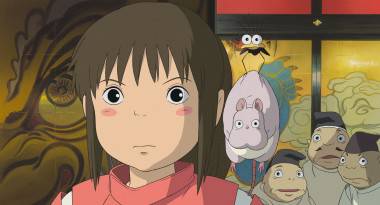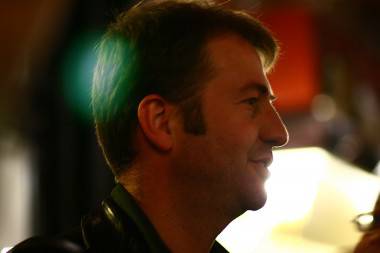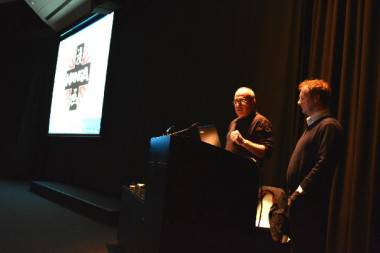Canterbury Anifest: Let’s talk about Anime.
Canterbury Anifest celebrated its eighth year with a specific celebration of Japanese animation and culture, from a brief history of Anime to screenings of Ghibli, the festival was a well rounded exhibition for both novices and seasoned experts.
Held at the university of Kent for the first time in six years, Anifest was host to an exciting series of talks, workshops, live performances and films all inspired by Japan’s cultural take on animation. Talks included industry experts such as Andy Frain and Anime archivist and historian Helen McCarthy. The festival also screened a week-long Studio Ghibli-inspired exhibition called 8-bit Ghibli, created by conceptual artist Richard Evans, alongside a captivating season of films including Akira, Patema Inverted, Perfect Blue, Spirited Away, My Neighbour Totoro and Kiki’s Delivery Service.
Aside from having fun and watching great moves, the festival’s aim was to review Japan’s role in global animation and question our Western perception of ‘anime’ with two complementing lectures by Jasper Sharp and Helen McCarthy.

This year alone, we have seen Ghibli’s Hayao Miyazaki retire (again), many major Western media outlets raised questions of the future of the beloved studio. A mistranslated report broke that the studio was set to close down entirely, which caused a quick storm online, but was later corrected that the studio would only downsize its production to “check it’s direction”. The whole episode proved how potentially popular anime is globally, but also how distant we are in understanding the language barrier – let alone the cultural connotations – without learning or living in Japan. More recently Hayao Miyazaki announced he would only retire from feature films and, like Glen Keane, plans to create short animated films for his retirement. It would be surprising, however, if Miyazaki would work with the likes of Google, as his view on animation differs vastly to Western cultural ideas.
Ghibli is perhaps the only Japanese studio reported on in the West, perhaps thanks to a distribution deal with Disney which arguably is the sole reason we have Ghibli films so readily available in the UK and US. Ghibli is a household name, but what of anime as a whole – and how can we better understand it?
Here is a brief review of what I learned at Canterbury Anifest 2014, from Jasper Sharpp and Helen McCarthy, key speakers of the festival.
‘Anime’ is a very Western label, and has become a term used to package Japanese animation to sell it to a Western audience and differentiate it from Western animation. Whereas in Japan, any animation is considered Anime, for example Disney’s Frozen is soon to be the highest grossing Anime of all time.
Influenced by western newspaper comic strips, Manga (the comic version of Anime) evolved in the early 20th century to incorporate panels and serialisation, It was British expats who taught the original Manga artists sequential panels and publishing. However, it wasn’t until the work of Tezuka Osamu that Manga became what we recognise today, breaking away from strips and creating full comic books with epic storylines.
The militarisation and subsequent US occupation of Japan brought Manga into animation, although there is evidence of Japanese animation as early as the 1910s. The simple cel animation Corporal Norakuro began in 1934 and followed the exploits of a dog rising in the ranks of the Japanese navy. The film later evolved into a propaganda film and Japan’s first feature length animated film, Momotaro’s Sea Eagle. The Second World War banned imports into Japan, helping the country’s art industry flourish without international competition and, as a result, animation benefited heavily.
Although post-war Japan was impoverished, the boom of television and electronic manufacturing greatly helped Anime as national television networks demanded content for the newly released TV sets. Many Japanese citizens bought a TV to watch the royal wedding of Emperor Shōwa and Empress Kōjun on April 10th, 1959 – Japan’s first major televised event. Japan had imported television and cartoons from America, but nationals wanted to create their own animations based on both old Manga as well as original content. Thus Toei doga, Japan’s answer to Disney, was born and continues to create animation to this day. Toei Doga also influenced the founding of Mushi Productions and Studio Ghibli.
The most interesting information gleaned from listening to Helen McCarthy and Jasper Sharp at Anifest is the notion that Japan’s culture welcomes nostalgia more than Western cultures, including our own. As we grew up on Disney and Looney Tunes and then were encouraged to grow out of it, Japanese culture has cultivated the idea of sticking to what you love. This has lead to Anime being enjoyed by both children and adults, with specific shows aimed at targeted age groups as they develop. This idea has also helped the preservation of art in Japanese animation; Characters, TV shows or concepts created are hardly retouched or re-written. Astroboy, for example, is always the same in every revival, whereas the recent Bob the Builder…do I need to say any more? Nostalgia has also helped Japanese animation escape the stigma of being a child-only medium, with the most highly watched TV show in Japan the soap opera Anime Sazae-San, which has been running for 45 years.
In the West, since the release of Akira in the early 90s, Anime has held a core group of fans whom see themselves as enjoying something similar yet separate from Western animation. Anime has also been in the news beginning rather unfavourably in the 90s when described in Parliament as violent snuff movies, however this has grown more affectionate in the last 10 years with the help of Ghibli.
Canterbury Anifest, although a small festival compared to some, hosted a very fun and enjoyable week for both children and adults. The idea of creating an animation festival with a specific theme paid off, as it focused the programme and conceptualised the events. I left the events wishing to share more of the specific things I learned, which is always a great sign of a festival’s success.



